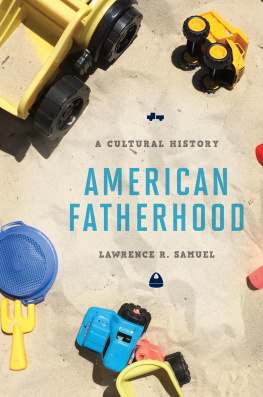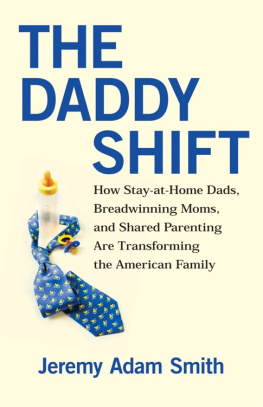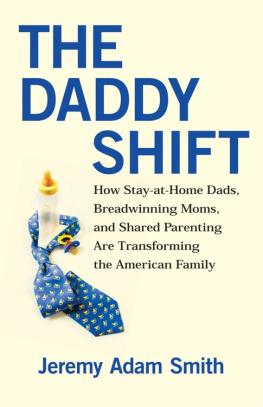Emerald Publishing Limited
Howard House, Wagon Lane, Bingley BD16 1WA, UK
First edition 2017
Copyright Catherine Richards Solomon, 2017
Reprints and permissions service
Contact:
No part of this book may be reproduced, stored in a retrieval system, transmitted in any form or by any means electronic, mechanical, photocopying, recording or otherwise without either the prior written permission of the publisher or a licence permitting restricted copying issued in the UK by The Copyright Licensing Agency and in the USA by The Copyright Clearance Center. Any opinions expressed in the chapters are those of the authors. Whilst Emerald makes every effort to ensure the quality and accuracy of its content, Emerald makes no representation implied or otherwise, as to the chapters suitability and application and disclaims any warranties, express or implied, to their use.
British Library Cataloguing in Publication Data
A catalogue record for this book is available from the British Library
ISBN: 978-1-78743-502-5 (Print)
ISBN: 978-1-78743-501-8 (Online)
ISBN: 978-1-78743-539-1 (Epub)
CHAPTER 1
THE LANDSCAPE OF FATHERHOOD AND STAY-AT-HOME FATHERING
Images of fathers providing care for their children abound in popular media in the early 21st century. Sociological research has shown that, indeed, fathers spend more time with their children than they did 50 years ago (Sayer, 2005) and fathers and mothers agree that both should be equally involved in carework (Galinsky, Aumann, & Bond, 2011). There are some differences among men, however. Shows and Gerstel (2009) found that men in blue-collar jobs were more likely to provide care for their children than men with professional jobs (see also Williams, 2010). Many working-class fathers work in alternate shifts from their wives to provide childcare while their wives work (Shows & Gerstel, 2009). These men are intimately involved with their childrens day-to-day lives and provide hands-on care, what Shows and Gerstel call private fatherhood (2009:175). In contrast, professional men perform what they term public fatherhood, attending and engaging with their children during public events, such as recitals, games, or school events (2009:172) but doing little to no hands-on care. It seems that some professional, highly educated men only espouse egalitarian beliefs about parenting and do not practice it. Thus, they say they want to be as involved, or ought to be as involved, as their wives are, but their behavior resembles that of traditional fathers (Cooper, 2002; Harrington, Van Deusen, & Fraone, 2013; Williams, 2010). Men in highly masculinized professional careers report silencing work/family conflict as their desire to be involved with family life counters hegemonic masculinity and can threaten their professional success (Berdahl & Moon, 2013; Cooper, 2002:19; Rudman & Mescher, 2013). Therefore, despite their desire to be more involved with their children, the tenets of masculinity and breadwinning hinder their willingness to do so.
However, other evidence exists that highly educated fathers with egalitarian gender beliefs are involved fathers (Cooper, 2002; McGill, 2014; Yoshida, 2012), with some men assuming primary responsibility for childcare when they come home from paid work. Some professional men significantly cut their work hours for childcare and use flexible work schedules to provide care for their children (Gasser, 2017; Noonan, Estes, & Glass, 2007). These men use their privileged status to increase their involvement with their children and their family lives, instead of abiding by traditional notions of masculinity and fatherhood, with their sole reliance on the importance of breadwinning.
Regardless of class, men tend to be more involved with their children if they see themselves as capable parents and if they, not their childrens mothers, are the ones who determine their level of involvement with their children (Cook, Jones, Dick, & Singh, 2005; Jacobs & Kelley, 2006; Pragg & Knoester, 2017). Wives working hours do have a positive relationship with husbands involvement the more hours that women work for pay, the more hours husbands contribute to childcare (Hook & Wolfe, 2012). These changes are in line with the evolution of ideals about what makes a good father a shift from the traditional breadwinner to the involved father (Daly, 1996; Lamb, 2000; Pleck & Pleck, 1997; Risman, 1998).
Involved fatherhood entails an involvement in the hands-on daily work of parenting that goes above and beyond the traditional father who plays with his children in the evenings and on the weekends (Lamb, 2000; Pleck & Pleck, 1997). Involved fathers are ones who feed their children, give baths, help children get dressed, read bedtime stories, and transport children to their activities; however, not every involved father does all of these activities (Lamb, 2000). Involved fathers, however, work for pay so their family work does not counteract hegemonic masculinity. Indeed, their dual engagement with paid work and family work is why some scholars have argued for the continued importance of breadwinning (in some form or another) to fatherhood, and also to masculinity (Lamb, 2000; Pleck & Pleck 1997; Sayer, 2005; Whelan & Lally, 2002). They argue that breadwinning continues to occupy the base of fathering because mens wages still outpace womens wages in most occupations (Lamb, 2000; Pleck & Pleck, 1997; Sayer, 2005; Whelan & Lally, 2002).
In Coltranes (2000) review of the division of household labor among married heterosexual couples, it was evident that men did not contribute equally to housework as women did. Fast forward ten years and men feel they should spend more time in family care (Harrington et al., 2013) and actually have increased the time they spend in housework, compared to men in previous generations (Galinsky et al., 2011). Such an increase seems related to an increase in the acceptance of and the expectation of egalitarian family relationships between husbands and wives, particularly among well-educated men and women (Kaufman, 2005). However, men in dual-earner families still contribute significantly less to housework than their wives do, regardless of how many hours their wives work for pay (Galinsky et al., 2011; Whelan & Lally, 2002). Thus, even with significant time and energy demands on their wives days, men still are not as equally involved with the care of their family as women are. This illustrates that gender norms from the 20th century still hold sway.
Many fathers see themselves as their wives helpers or backup parents instead of as primary caregivers (Craig, 2006:275; Solomon, 2011). Because some men do not see themselves as primary caregivers, their time with children is often spent doing fun recreational activities (Milkie, Simon, & Powell, 1997; Yeung, Sandberg, Davis-Kean, & Hofferth, 2001). The continued focus on breadwinning may be because masculinity depends on mens engagement in the labor force and their financial support for their families (Connell, 1987, 2005; Cooper, 2002; Gerson, 1993; Shows & Gerstel, 2009; Townsend, 2002; Williams, 2010). Thus, some men continue to focus on those aspects as they relate to fathering. Many professional men see fatherhood as both caring for my child and earning money to meet his/her financial needs (Harrington et al., 2013).










